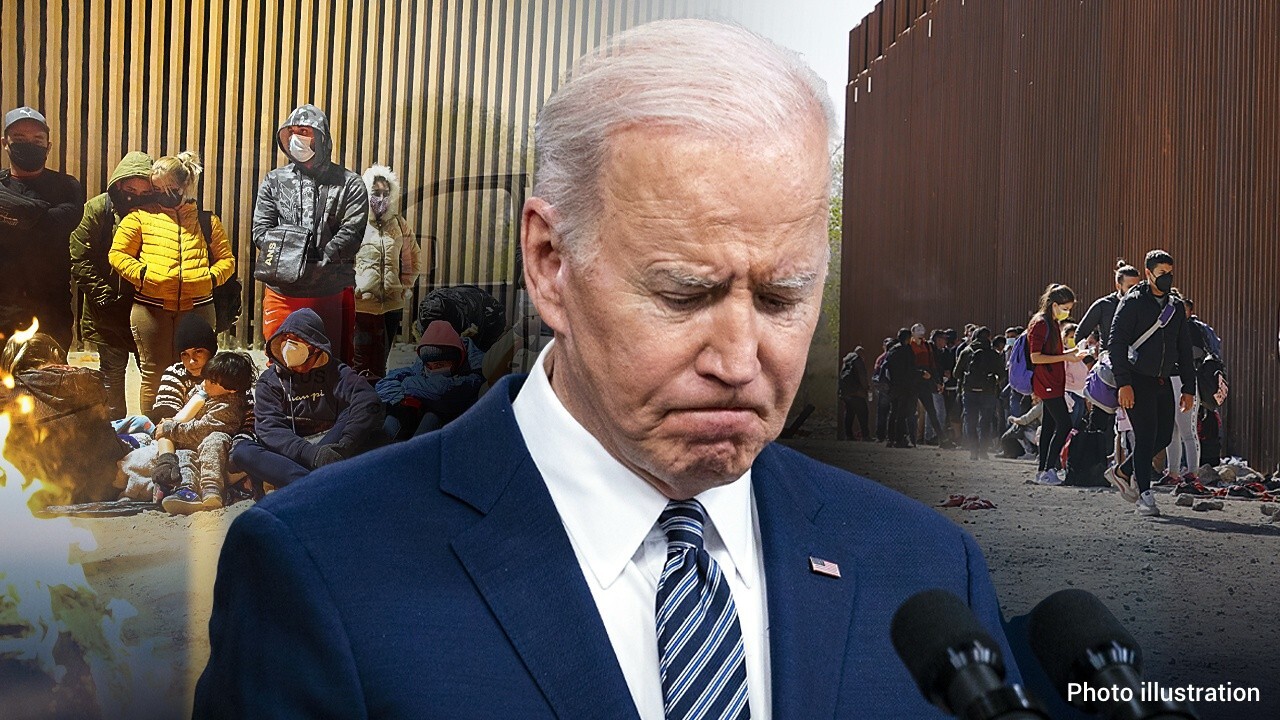Trump Administration's Immigration Policies: A Legal Minefield

Table of Contents
H2: The Travel Ban: A First Amendment Challenge
The Trump administration's travel ban, initially targeting several Muslim-majority countries, ignited immediate and widespread legal challenges. These challenges largely centered on allegations of religious discrimination, violating the First Amendment's guarantee of religious freedom.
H3: Religious Discrimination Allegations:
The core argument against the ban was that it disproportionately affected Muslims, suggesting religious animus as its underlying motivation. The administration, however, consistently defended the ban as a necessary measure for national security, citing concerns about terrorism and vetting procedures.
- Rationale Behind the Ban: The administration argued the ban was necessary to prevent the entry of individuals who posed a national security threat.
- Legal Arguments Against the Ban: Opponents argued the ban violated the Establishment Clause of the First Amendment by favoring certain religions over others. They also pointed to the lack of evidence linking the targeted countries to a higher risk of terrorism.
- Key Court Rulings and Their Impact: The Supreme Court ultimately upheld a revised version of the ban, finding that the president had broad authority in matters of national security. However, this ruling did not fully resolve the underlying concerns about religious discrimination.
- Ongoing Debates: Debates continue regarding the balance between national security concerns and the fundamental rights guaranteed by the First Amendment. The travel ban remains a stark example of the inherent conflicts within immigration policy.
H2: DACA (Deferred Action for Childhood Arrivals) and its Uncertain Future
The Deferred Action for Childhood Arrivals (DACA) program, implemented by the Obama administration, offered temporary protection from deportation and work authorization to undocumented immigrants who arrived in the US as children. The Trump administration's attempts to dismantle DACA added another layer to the complex legal landscape of immigration.
H3: The Legal Basis of DACA:
The legality of DACA hinged on the executive branch's authority to exercise prosecutorial discretion. Supporters argued that the program was a reasonable exercise of that discretion, while opponents contended it exceeded executive authority and violated the Immigration and Nationality Act.
- Program's Origins and Purpose: DACA aimed to provide relief to undocumented individuals brought to the US as children, often referred to as "Dreamers."
- Challenges to DACA's Legality: Legal challenges argued that DACA lacked statutory authorization and created a de facto amnesty program that Congress alone had the power to enact.
- Ongoing Political and Legal Battles: The legal battles surrounding DACA continue to shape the lives of hundreds of thousands of Dreamers and highlight the ongoing tension between executive action and legislative authority in immigration matters.
- Potential Long-Term Implications for Dreamers: The long-term status of Dreamers remains uncertain, highlighting the need for comprehensive immigration reform.
H2: Increased Border Security and Enforcement Actions
The Trump administration implemented a significantly stricter approach to border security and immigration enforcement. This included increased deportations, the "zero tolerance" policy, and heightened scrutiny of asylum seekers.
H3: Due Process Concerns:
The increased enforcement actions raised serious due process concerns for detained immigrants, particularly regarding the speed and fairness of deportation proceedings.
- Zero Tolerance Policy and Family Separation: The "zero tolerance" policy led to the separation of children from their parents at the border, sparking widespread outrage and legal challenges.
- Legal Cases Challenging Detention and Deportation Procedures: Numerous lawsuits challenged the legality of prolonged detention without adequate legal representation and due process violations in deportation hearings.
- Impact on Asylum Seekers and Refugees: Stricter asylum procedures and increased border security significantly impacted the ability of asylum seekers and refugees to access protection.
- Role of International Human Rights Law: International human rights law played a significant role in legal challenges, highlighting the US's obligations to protect the rights of vulnerable populations.
H2: Changes to Asylum Procedures and Eligibility
The Trump administration made significant changes to asylum procedures and eligibility criteria, making it considerably more difficult for asylum seekers to obtain protection.
H3: The "Credible Fear" Standard:
The administration tightened the "credible fear" standard, the initial screening process for asylum applicants. This resulted in fewer asylum seekers being allowed to proceed with their full asylum claims.
- Impact on Asylum Seekers' Ability to Seek Protection: The stricter standard significantly reduced the number of successful asylum applications, leaving many vulnerable individuals without protection.
- Legal Challenges to These Changes: The changes to the credible fear standard faced significant legal challenges, arguing that they were arbitrary and violated international law.
- Consequences for Vulnerable Populations: The changes disproportionately affected vulnerable populations, including women, children, and LGBTQ+ individuals fleeing persecution.
- Relevant Supreme Court Cases or Lower Court Decisions: Various court decisions addressed the legality and impact of these changes, contributing to the ongoing legal complexities of asylum law.
3. Conclusion:
The Trump administration's immigration policies presented a complex and controversial legal minefield, sparking numerous lawsuits and raising profound ethical questions. The travel ban, the challenges to DACA, increased border enforcement, and changes to asylum procedures all created significant legal and humanitarian consequences. The legacy of these policies continues to influence ongoing debates and legal battles, shaping the future of immigration law in the United States. Understanding the complexities of the Trump Administration's Immigration Policies is crucial to advocating for a more just and humane immigration system. Continue your research and engage in respectful dialogue to shape the future of immigration law.

Featured Posts
-
 Nba Launches Formal Probe Into Ja Morant Incident
Apr 24, 2025
Nba Launches Formal Probe Into Ja Morant Incident
Apr 24, 2025 -
 Exclusive Preview Posters And Photos From John Travoltas High Rollers
Apr 24, 2025
Exclusive Preview Posters And Photos From John Travoltas High Rollers
Apr 24, 2025 -
 Hegseths Loyalty To Trump Navigating The Signal App Debate
Apr 24, 2025
Hegseths Loyalty To Trump Navigating The Signal App Debate
Apr 24, 2025 -
 Zuckerberg And Trump A New Era For Facebook And Politics
Apr 24, 2025
Zuckerberg And Trump A New Era For Facebook And Politics
Apr 24, 2025 -
 How Effective Middle Management Benefits Companies And Their Staff
Apr 24, 2025
How Effective Middle Management Benefits Companies And Their Staff
Apr 24, 2025
